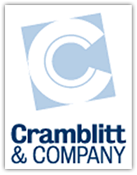PR in practice: Your story in print and pixels
August 2nd, 2009
With all the buzz about social media, it’s sometimes forgotten that the traditional story placement in a trade, business or local publication is an incredibly valuable asset. Here are tips on getting stories in print or pixels.
You’ve written the press release, taking pains to quantify the benefits of the product or service in easily understood terms. You’ve documented the significance of your announcement with quotes from analysts, customers or other third-party sources. The story is free of puffery and bombast. In short, you have news.
Or, perhaps you’ve written a great application story, one that concentrates on a unique process or technology being applied in innovative ways. You have a valuable asset, but now you need to leverage it.
You have a good targeted press list, and perhaps you’ve added some vertical-market publications or technology editors from general-interest outlets that might be interested in the story. You’ve sent it out to your mail list and perhaps to a wire service. Now, you need to secure coverage. Here are key things to keep in mind:
- Prioritize follow-up according to those publications that are most important to your client. Using Bacon’s or other media-listing services, determine whether it is best to follow up by phone, e-mail or fax.
- Determine how to position the story, review questions and answers, and make certain that you understand the key elements of the story and/or announcement. Be prepared to answer questions and speak naturally about the product and/or story.
- Coordinate timing of follow-up to coincide as much as possible with the publication’s deadline date and when it is best to submit stories, and the best time of day, week or month to contact the editor/writer.
- Make sure you are reaching the proper editor/writer and targeting your presentation to the proper section of the publication.
- Plot out your presentation so you are emphasizing newsworthy aspects as concisely as possible. Write out a script or keep notes handy if necessary, but try to sound natural. Make sure your follow-up provides information of value: an offer of images, a fresh perspective, an opinion not offered in the original story, an update on the original information.
- Be pleasantly persistent if your news item or story is rejected without any reason given. Ask the editor or writer: “Can you tell me why this isn’t considered a significant story?” Present your case based on knowledge of the publication’s past coverage, and why the story is important to the publication’s readers and the industry. Be polite, but firm. If the answer is still no, try to end the conversation on a positive note: “I’m sorry you don’t see the story the same way we do, but I appreciate the time you’ve taken to explain your decision. It should help us to prepare future stories that are more relevant to you.”
- Establish a personal rapport with your press contacts as much as possible. Compliment them on a story that you think was well done. Follow their work, and not just when it involves a client. Thank them for getting a client’s story right or positioning it prominently, saying something like “I thought your treatment of the story reflected its importance to the industry,” or “I thought you honed in on the most important aspects of [our client’s] new product.” If your press contact shares personal information, take note of it and ask about it in the future. Provide your contacts with editorial leads, especially if they are not related to a client. Let them know you are paying attention to what they are doing. Be more than another voice on the phone asking for something.
- Be an advocate for your clients. Be enthusiastic. Let editors know you are disappointed if coverage doesn’t appear. Let editors/writers know how important their publication is to your client and state the client’s case forcefully when necessary.
- If a story idea is turned down, appeal to a higher authority if it can be done tactfully and without undercutting a regular contact. This action should be taken especially if your contact says something like, “My editor doesn’t think this is an appropriate story.” Your reply should be: “I’d like the opportunity to present it to him/her personally. If it is still rejected, at least I’ll know exactly why and it could help me in the future.”
- If your story doesn’t get the coverage you expect the first time around, try repositioning it a couple of months later. Do a shorter version. Emphasize another aspect of the story. See if you can get an update that might make it more newsworthy.
- After a placement is confirmed verbally or by e-mail, check the issue of the publication in which it is scheduled to appear. Call immediately if the coverage does not appear. Don’t place blame, but stress the importance of the coverage to the client, reiterate why the story is important, and push for coverage in the next issue. Inform the client of your actions and the results immediately.
- Conduct a web search after the release goes out and report initial results to the client. Also conduct a search before preparing a clipping report.
Getting good media placements for your clients is the result of having a good story to tell, developing long-term relationships and mutual respect between you and your media contacts, offering deep knowledge of your clients and their technologies, and being gently persistent.


Great series, Bob. Here’s a timely post from Kenneth Wong on how he likes to be pitched…
http://www.deskeng.com/virtual_desktop/?p=531